-
Recent Posts
- Trump’s “Big Beautiful Bill” Is a Grotesque Giveaway to Fossil Fuel Billionaires While Adding $3.3 Trillion to Nation’s Debt
- Senator Chris Murphy Charges that Trump “Has Opened a Channel for Bribery”
- Congressman Casten: Trump’s Assault on the Rule of Law Is Causing Capital Flight Out of U.S. by Foreign Investors
- Trump’s Approval Rating Drops to 80-Year Low; IMF Says U.S. Tariffs Now Exceed the Highs During the Great Depression
- Nasdaq Has Lost More than 3,000 Points Since Trump’s First Full Day in Office in 2025; the Pain Has Barely Begun
- The Bond Crisis Last Week Was a Global No-Confidence Vote in U. S. President Donald Trump
- Trump’s Tariff Plan Guts $5 Trillion in Stock Value in Two Days; Senator Warren Calls for Emergency Action Before Markets Open on Monday
- Trump’s Attacks on Big Law, Universities, and the Media Have a Common Goal: Silence Dissent Against Authoritarian Rule
- Trump Administration Gives All Clear to Laundering Money through Shell Companies and Bribing Foreign Officials
- Four Megabanks on Wall Street Hold $3.2 Trillion in Uninsured Deposits – Which May Explain Senator Schumer’s Pivot to the GOP to Stop a Government Shutdown
- Here’s What Came Crashing Down Yesterday for Trump’s “Genius” Guy, Elon Musk: Tesla Stock, Access to Twitter (X), His Years of Secret Calls with Putin
- After Banning the Associated Press, Trump Is Now Targeting Specific Journalists That He Wants to See Fired
- Closely Watched Atlanta Fed Model Predicts Negative U.S. Growth in First Quarter
- Trump’s Gangster Diplomacy Makes Front Page Headlines Around the Globe
- Who Benefits Alongside Elon Musk If He Succeeds in Killing the CFPB: the Megabanks on Wall Street that Underwrite His Tesla Stock Offerings
- In Trump 1.0, the State Department Used Taxpayer Money to Publish a Book Elevating Elon Musk to a Superhero; It Was Funded by USAID, the Agency Musk Wants to Quickly Shut Down
- News Host Joy Reid Raises Threat of Trump Selling U.S. to Putin; Ten Days Later Her Show Is Cancelled
- Elon Musk’s DOGE Appears to Be Violating a Court Order; It Has Taken Down Hundreds of YouTube Videos that Educate Americans on How to Avoid Being Swindled
- Barron’s Releases Audio of Jamie Dimon Cursing Out His Workers at a Town Hall, as Dimon Plans to Dump Another One Million JPM Shares
- There’s One Federal Investigative Agency that Neither Trump nor Elon Musk Can Touch: It Just Opened an Investigation into DOGE
- Elon Musk’s Companies Were Under Investigation by Five Inspectors General When the Trump Administration Fired Them and Made Musk the Investigator
- Donald Trump Gives the Greenlight to Goldman Sachs and JPMorgan Chase to Return to Bribing Foreign Officials
- After Tech Geeks Built a Back Door to Loot Billions from FTX, Republicans Refuse to Investigate What Elon Musk’s Tech-Squad Did Inside the U.S. Treasury’s Payment System
- Former Prosecutor, Now U.S. Senator, Informs Tesla That CEO Musk May Be Violating Federal Law and to “Preserve All Records”
- Trump’s Hedge Fund Guy Is Now Overseeing the U.S. Treasury, IRS, OCC, U.S. Mint, FinCEN, F-SOC, and the Consumer Financial Protection Bureau
- As Elon Musk Begins Shutting Down Payments to Federal Contractors, a Strange Money Trail Emerges to His Operatives Inside the U.S. Treasury’s Payment System
- JPMorgan Chase Charged by Yet Another Internal Whistleblower with Cooking the Books
- We Asked Google’s AI Search Model, Gemini, Questions About the Fed and Wall Street Megabanks: It Got the Answers Dead Wrong
- With Trump and Melania’s Crypto Coins Likely to Raise Legal Challenges, Why Didn’t Trump Fire the SEC’s Inspector General in His Purge of IGs?
- Fossil Fuel Industry Could End Up Paying Tens of Billions for LA Wildfires and Deceiving the Public on Climate Change for Decades
- It’s Being Called the Biggest Grift by a President in U.S. History: Trump and First Lady Launch their Own Crypto Coins
- Trump Plans to Install a Fracking CEO to Head the Energy Department and Declare a National Emergency on Energy to Gain Vast Powers
- Fossil Fuel Money Played a Role in the Los Angeles Fires and the Push to Install Pete Hegseth as Secretary of Defense
- When It Comes to Wealth Retention in Retirement, Concrete May Be the New Gold
- Wall Street Watchdog Warns “Clock Is Ticking on a Coming Catastrophic Financial Crash”
- Wall Street Is Sending the Same Message to Americans on Fossil Fuel Financing that It Sent on Cigarettes: Drop Dead
- In a Six-Week Span, this Dark Pool with a Curious Past Traded 3.7 Billion Shares
- Wall Street’s Lobby Firm Hired Eugene Scalia of Gibson Dunn to Sue the Fed for Jamie Dimon
- Postmaster General Louis DeJoy Made $561,051 in Compensation in 2024, as Mail Costs Spiked and Delivery Deteriorated
- Fed Chair Jay Powell Sends a Bold Message to Trump and Tanks the Dow by 1123 Points
- The Head of Fixed Income at T. Rowe Price Makes the Scary Case for the 10-Year Treasury to Spike to 6 Percent
- $663 Billion in Cash Assets Have Gone Poof at the Largest U.S. Banks
- Donald Trump to Ring Bell at New York Stock Exchange Today as Hit List Posters Appear in Manhattan Targeting Wall Street CEOs
- Trump Has a Slush Fund to Prop Up the Dollar – Will He Use It to Prop Up Bitcoin Instead?
- A CEO Assassination; a Billionaire Heiress/NYPD Commissioner; a Secret Wall Street Spy Center – Here’s How They’re Connected
- Despite More than 1600 Tech Scientists Signing a Letter Calling Crypto a Sham, Trump Names a Crypto Cheerleader for SEC Chair
- The Fed Rings a Warning Bell: Hedge Funds and Life Insurers Are Reporting Historic Leverage
- Trump’s Nominee for FBI Director, Kash Patel, Has Businesses Financially Intertwined with Trump
- Donald Trump Is at Risk of Getting Named in a Fossil Fuels Conspiracy Lawsuit
- Trump Is Having Difficulty Getting a Lawyer to Accept the Nomination for SEC Chair: Here’s Why
Search Results for: Jamie Dimon
Wall Street’s Felon Banks Take a Short Holiday from Financing Political Campaigns
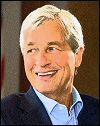
By Pam Martens and Russ Martens: January 12, 2021 ~ Five-count felon JPMorgan Chase is shocked – shocked! – that corporate financing of “the people’s House” has led to corruption and instability in Washington. The Board of Directors of JPMorgan Chase obviously did not see money as a corrupting influence because it has boosted the pay of its Chairman and CEO, Jamie Dimon, to $31.5 million annually despite the fact that Dimon sat at the helm of this bank through its unprecedented five felony counts in a span of six years. The bank admitted to all five counts and got deferred prosecution agreements every single time from the U.S. Department of Justice. Not one of the myriad federal regulators of this bank demanded that Dimon step down as unfit to oversee a bank holding $2 trillion in depositors’ life savings as this six-year crime spree went unchecked. Now JPMorgan Chase, … Continue reading
Janet Yellen’s Cash Haul of $7 Million Is Just the Tip of the Iceberg; She Failed to Report Her Wall Street Speaking Fees from JPMorgan and Others in 2018

By Pam Martens and Russ Martens: January 6, 2021 ~ On December 29 we needed a clarification from former Treasury Secretary Larry Summers about his opinion column against Congress issuing $2,000 stimulus checks. We sent him an email at 10:13 a.m. and received a very clear response from him directly at 12:51 p.m. that day — a span of a few hours. Compare that timely response to Janet Yellen’s respect for the media’s obligation to report a full set of facts to the American people. Three days ago, we contacted Yellen at four different entities with which she is affiliated. Only the Brookings Institution responded, saying she was on leave. President-elect Joe Biden’s media team did not respond at all, nor did the Washington Speakers Bureau and University of California, Berkeley. Yellen is Biden’s nominee for U.S. Treasury Secretary. In anticipation of her Senate confirmation hearing, she has released her … Continue reading
Gallup Polling: For the Past 18 Years, U.S. Adults Have Preferred Real Estate as an Investment Over Stocks

By Pam Martens and Russ Martens: December 31, 2020 ~ Happy New Year’s Eve 2020 and welcome to a correctly skeptical America when it comes to Wall Street. Despite the President of the United States using his bully pulpit for the past four years to tell Americans how great the stock market is (see here, here and here, for example) Gallup polling shows that U.S. adults have consistently favored real estate as the better long-term investment over stocks. (See chart above.) In fact, in the April 1-14 poll that Gallup conducted this year, stocks reached their lowest score versus real estate since 2012. In the spring poll, which followed the sharp stock market selloff in March, 35 percent of adults rated real estate the better long-term investment versus 21 percent who voted for stocks. The perception that Wall Street is a rigged arena for the benefit of the one percent … Continue reading
Every Time Larry Summers Challenges Bernie Sanders, It Ends Badly for All Americans

By Pam Martens and Russ Martens: December 29, 2020 ~ As Senator Bernie Sanders advocates for $2,000 pandemic relief checks for struggling Americans, Larry Summers is challenging the premise of $2,000 checks using ginned-up statistics that were dubiously published by Bloomberg News on Sunday. Larry Summers stepped into Robert Rubin’s post as Treasury Secretary under President Bill Clinton after Rubin left to make $15 million a year serving on Citigroup’s board. Citigroup was the Frankenbank that both Summers and Rubin made possible by advocating for the repeal of the Glass-Steagall Act. That seminal piece of legislation from 1933 had successfully banned the combination of deposit-taking banks with Wall Street’s casino trading houses for 66 years until these two men and their ilk got Clinton to sign its repeal in 1999. At the November 12, 1999 signing ceremony for the Gramm-Leach-Bliley Act, the legislation that repealed the Glass-Steagall Act, Summers said … Continue reading
OCC Says JPMorgan Chase Has $29.1 Trillion of Custody Assets; That’s $8 Trillion More than the Assets of All Banks in the U.S.

By Pam Martens and Russ Martens: December 4, 2020 ~ On November 24 the Office of the Comptroller of the Currency (OCC) fined JPMorgan Chase $250 million for wrongdoing that was apparently too deplorable to be spoken out loud to the public. The specific details were cloaked in this phrase: “failure to maintain adequate internal controls and internal audit over its fiduciary business.” We went to the OCC’s Consent Order connected to the fine to see if there were the typical smoking gun internal emails or at least some clue as to what the actual illegal activity was. There were zero clues, just more obfuscation. What we did see, however, was a dollar figure that popped our eyes wide open. The OCC Consent Order said this: “The Bank maintains one of the world’s largest and most complex fiduciary businesses with total fiduciary and related assets of $29.1 trillion, including $1.3 … Continue reading
From Soros to Warren Buffett, the Smart Money Is Dumping Shares of JPMorgan Chase
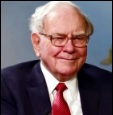
By Pam Martens and Russ Martens: November 18, 2020 ~ According to the 13F filing that Warren Buffett’s Berkshire Hathaway made with the Securities and Exchange Commission for the quarter ending December 31, 2019, it held 59.5 million shares of JPMorgan Chase with a total value at that time of $8.29 billion. By June 30 of this year, that position had been trimmed by more than half, to 22.2 million shares. By September 30, one day after JPMorgan Chase had just admitted to its fourth and fifth felony count in the past six years, brought by the U.S. Department of Justice, Berkshire Hathaway’s position in JPMorgan Chase tallied up to just under 1 million shares, a 98 percent reduction from the beginning of the year, according to the SEC filing Berkshire Hathaway made on Monday. And it’s not like Buffett is simply getting out of all big bank stocks. According … Continue reading
The Fed Says It’s Considering a Central Clearing Facility for the Treasury Market

By Pam Martens and Russ Martens: November 13, 2020 ~ The Vice Chairman for Supervision at the Federal Reserve, Randal Quarles, dropped a bombshell during the House Financial Services Committee hearing held yesterday, but because mainstream media ignores these hearings unless they have something to do with Donald Trump, this critical news went unreported. Congressman Bill Foster of Illinois addressed Quarles with this statement: “The Treasury market is the most liquid fixed income market in the world. It serves as a critical benchmark for other bond markets that are essential. It allows the U.S. Dollar to operate as the world’s dominant reserve currency. That is why it is crucial that these financial pipes continue to function well, especially as we continue to fight COVID-19 and we work to provide fiscal relief to millions of struggling families and small businesses. “When the Fed has to step in to support the market … Continue reading
JPMorgan Chase Is Under a New Federal Investigation, One Month After Getting Slapped with Its 4th and 5th Criminal Felony Count
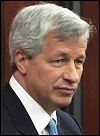
By Pam Martens and Russ Martens: November 10, 2020 ~ Each quarter publicly traded companies file a form known as the 10-Q with the Securities and Exchange Commission. The 10-Q filed by the largest bank in the United States, JPMorgan Chase, on November 2 carried a very disturbing paragraph that had not appeared in the 10-Q the bank filed on August 3. The paragraph reads as follows: “JPMorgan Chase Bank, N.A. has been advised by one of its U.S. regulators of a potential civil money penalty action against the Bank related to historical deficiencies in internal controls and internal audit over certain advisory and other activities. The Bank already has controls in place to address the deficiencies related to the proposed penalty. The Firm is currently engaged in resolution discussions with the U.S. regulator. There is no assurance that such discussions will result in resolution.” Why is this paragraph so … Continue reading
The Fed Appears to Have Put Its Finger on the Scale for Donald Trump on Friday
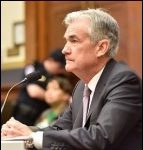
By Pam Martens and Russ Martens: November 2, 2020 ~ The U.S. stock market, as measured by the Dow Jones Industrial Average, lost 1,833.97 points last week. The Dow was down every day except Thursday, when it eked out a gain of 139.16. The market was reacting to the following bad news: soaring cases of COVID-19 in the U.S.; a reemergence of the virus in Europe causing business shutdowns there; the failure of the U.S. Congress to pass a new stimulus bill; and a sharply lower price for West Texas Intermediate (WTI), domestic crude oil – which signals a further slowdown in economic activity. (At 7 a.m. this morning, WTI was down further, with a $34 handle.) The stock market’s losses would have likely been greater last week were it not for an intervention staged by the Federal Reserve at 11:00 a.m. on Friday. Here’s what happened and why Americans … Continue reading
Congresswoman Katie Porter Says Fed Is Playing “Kingmaker on Wall Street” and “Appears Corrupt”
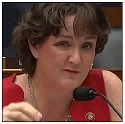
By Pam Martens and Russ Martens: October 27, 2020 ~ Congresswoman Katie Porter has never met an overpaid Wall Street billionaire that she couldn’t reduce to a flummoxed whimperer within a few minutes. (See video clip below of Porter and Jamie Dimon, Chairman and CEO of JPMorgan Chase, during an April 10, 2019 House hearing.) Porter has had the Chairman of the so-called “independent” Federal Reserve in her radar since he appeared at a House Financial Services Committee hearing on February 11 of this year. At the hearing, Porter held up a photo of Fed Chair Jerome Powell in black tie outside the mansion of billionaire Jeff Bezos, CEO of Amazon. Porter said this: “Can you imagine how attending a lavish party at Jeff Bezos’ $23 million home, along with Jared and Ivanka and the CEO of JPMorgan Chase, Jamie Dimon, might give off the sense to the public that … Continue reading

